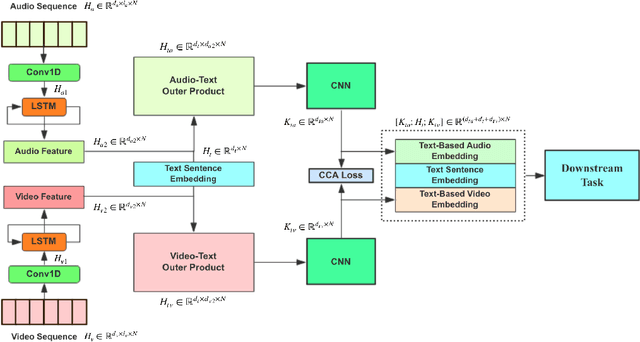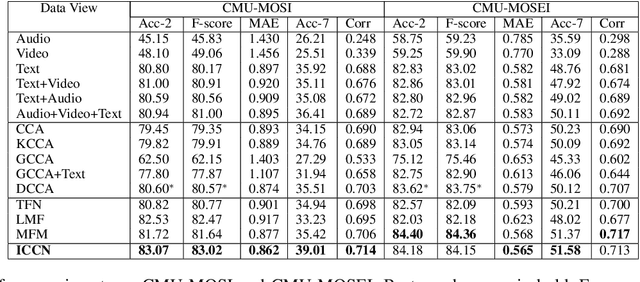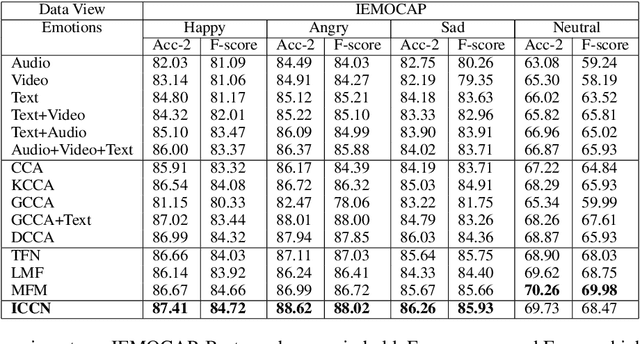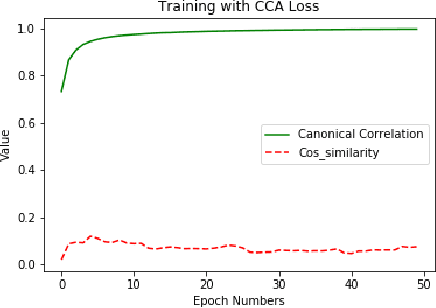Learning Relationships between Text, Audio, and Video via Deep Canonical Correlation for Multimodal Language Analysis
Paper and Code
Nov 30, 2019



Multimodal language analysis often considers relationships between features based on text and those based on acoustical and visual properties. Text features typically outperform non-text features in sentiment analysis or emotion recognition tasks in part because the text features are derived from advanced language models or word embeddings trained on massive data sources while audio and video features are human-engineered and comparatively underdeveloped. Given that the text, audio, and video are describing the same utterance in different ways, we hypothesize that the multimodal sentiment analysis and emotion recognition can be improved by learning (hidden) correlations between features extracted from the outer product of text and audio (we call this text-based audio) and analogous text-based video. This paper proposes a novel model, the Interaction Canonical Correlation Network (ICCN), to learn such multimodal embeddings. ICCN learns correlations between all three modes via deep canonical correlation analysis (DCCA) and the proposed embeddings are then tested on several benchmark datasets and against other state-of-the-art multimodal embedding algorithms. Empirical results and ablation studies confirm the effectiveness of ICCN in capturing useful information from all three views.
 Add to Chrome
Add to Chrome Add to Firefox
Add to Firefox Add to Edge
Add to Edge